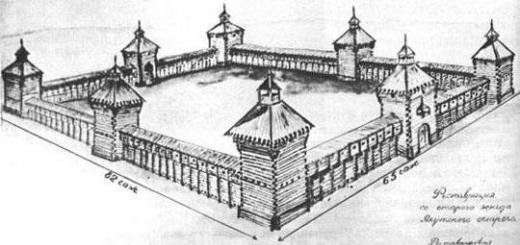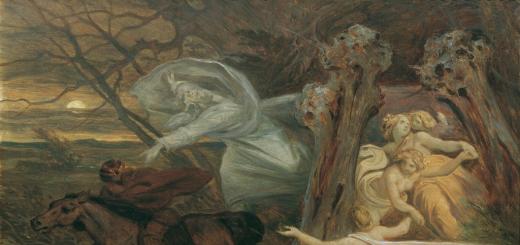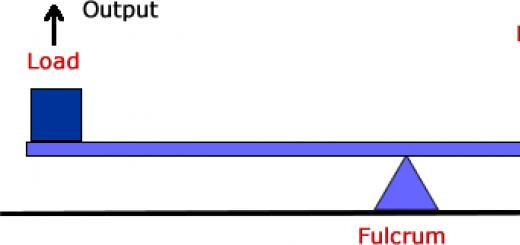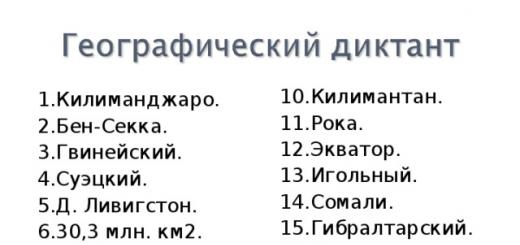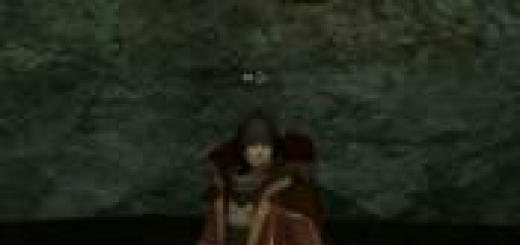The second half of the 18th century in Russia is associated with the name of the empress, whose reign constituted an era in the history of the country. Although Catherine II ascended the throne in 1762, already from 1744, from the moment of her appearance in the Russian capital, she influenced the course of events in the vast empire. True, in the first years of her life in St. Petersburg, the young German princess Sophia Frederica Augusta of Anhalt-Zerbst (born April 21 (May 2), 1729), married to the heir to the throne (the future Emperor Peter III) under the name of Catherine, seemed nothing more than a toy in the wrong hands. This is how she was, however, for some time, existing between a rock and a hard place - the selfish and despotic Empress Elizabeth Petrovna, on the one hand, and her underage husband, who did not hide his hostility towards his wife, on the other. But in the bustle and squabbles of court life, Catherine never for a minute lost sight of her main goal, for which she came to Russia, for which she patiently endured insults, ridicule, and sometimes insults.
This goal was the crown of the Russian Empire. Catherine quickly realized that her husband was giving her many chances to appear in the eyes of others as perhaps the only hope for salvation from his wild antics and extravagance. In any case, she persistently and consciously strove to be in good, if not friendly, relations with both the most influential nobles of the Elizabethan court, and with the hierarchs of the Orthodox Church, both with foreign diplomats, and with the objects of numerous amorous hobbies of her own. husband At the same time, the future empress did a lot of self-education, read the works of French educators and persistently mastered the Russian language. Thus, by the palace coup of June 28, 1762, it was not a random woman who was elevated to the Russian throne, as happened more than once in the history of Russia in the 18th century, but a person who had long and purposefully prepared for the role she had assumed.
The first two to three years of the reign of Catherine II deserve special consideration for two reasons: during these years the empress cleared away the “debris” left by previous reigns, and on the other hand, in these same years the beginnings of a new policy emerged, called enlightened absolutism.
Seven years after the coup, when Catherine’s position on the throne had become quite secure and nothing seemed to threaten her, she painted a gloomy picture of the situation in the country in the year she took the throne. Finances were in a state of disrepair, there were not even estimates of income and expenses, the army did not receive salaries, the fleet was rotting, fortresses were being destroyed, everywhere the people were groaning from the arbitrariness and extortion of the clerks, an unfair trial reigned everywhere, the prisons were overcrowded with convicts, 49 thousand were in disobedience. peasants assigned to the Ural factories, and landowners and monastery peasants in European Russia - 150 thousand.
In painting such a bleak picture, the empress, of course, exaggerated her colors, but in many ways it corresponded to reality. Moreover, Catherine kept silent about her two main troubles, which had deprived her of peace for several years: the first was the forcible seizure of the throne, the rights to which she had absolutely no rights to; the second problem is the presence of three legitimate contenders for the throne in the person of two deposed emperors and an heir - the son of Pavel Petrovich.
They managed to get rid of the overthrown husband - eight days after the coup, the guards assigned to protect him took his life. Son Paul did not pose a serious threat, since he had no support either in the guard, or at court, or among the nobles. Catherine rightly considered the most dangerous contender to be 22-year-old Ivan Antonovich, who was languishing in the Shlisselburg fortress. It is no coincidence that the empress, soon after her accession to the throne, wanted to look at him. He looked physically healthy, but many years of life in complete isolation caused irreparable damage - he turned out to be a mentally undeveloped and tongue-tied young man. Catherine calmed down somewhat, but did not gain complete confidence that the name of Ivan Antonovich would not become the banner of the struggle against her, and, as subsequent events showed, she was absolutely right.
Catherine, in addition, did not mention the foreign policy legacy received from her husband: the break with the allies in the Seven Years' War, the conclusion of an alliance with yesterday's enemy Frederick II, the transfer of Chernyshev's corps to his disposal and preparations for the war with Denmark.
The easiest and most profitable thing for Catherine was to disavow the foreign policy actions of Peter III - they were extremely unpopular both in society and in the active army, and especially in the guards regiments, which, by order of the emperor, were preparing for a campaign against Denmark. However, the rejection of her husband’s foreign policy course was incomplete: Catherine did not want to stay in the Allied camp to continue the Seven Years’ War, but to the delight of the pampered guardsmen, she canceled the Danish campaign and recalled the corps of Zakhar Chernyshev. She did not break the alliance with Frederick II, since she had plans for the benevolent attitude of the Prussian king towards the fate of the throne of the Polish-Lithuanian Commonwealth, where the imminent death of Augustus III was expected, as well as Courland, where the empress intended to return the ducal crown to Biron.
The situation was more difficult with regard to solving internal political problems. It was in this area that the empress was required to show maximum caution, foresight, the ability to maneuver and even act contrary to her convictions. She possessed these qualities to the fullest.
The empress confirmed the continuity of her policy towards the nobles with a decree on July 3, 1762, which ordered the peasants to be in the same unquestioning obedience to the landowners as before. Let us note that Catherine’s personal views on serfdom came into blatant contradiction with her legislation, that is, with practical measures that did not weaken, but rather strengthened serfdom. The continuity of policy was also manifested in Catherine’s confirmation of the normative acts of the previous reign: she left in force the decree of Peter III prohibiting the owners of manufactories from buying peasants and his decree on the abolition of the Secret Investigation Office of the Chancery.
Both decrees affected the interests of a small segment of the population. The first decree discriminated against manufacturers, but there were several hundred of them in the country, and their protest could be ignored. As for the Secret Investigative Affairs of the Chancellery, neither Peter III nor Catherine destroyed the body of political investigation, but only changed its name - from now on, the Secret Expeditions under the Senate and at the Senate Office in Moscow began to deal with political crimes. The complete continuity of punitive institutions is confirmed by the fact that the staff of the Secret Expedition was staffed by employees of the Secret Investigative Affairs Office, headed by the whip fighter Sheshkovsky.
The manifesto read to the peasants urged them to unquestioningly obey the authorities, since “one’s own resistance, even if it was forced by the right reasons, is a sin that is not excusable against God’s commandment.” If the peasants continued to resist, then they had to be pacified “with fire and sword and everything that can only come from an armed hand.”
Finally, Catherine II had the opportunity to “clear” another rubble left to her as a legacy by Elizaveta Petrovna, who in 1752 published a manifesto on carrying out land surveying in the country. With the Manifesto of 1765, Catherine refused to check ownership rights to land and was guided by the principle of leaving landowners with the lands that they owned by 1765. Thus, all lands previously seized from the treasury, one-lords and neighbors were transferred to landowners for free use. Memoirist A. T. Bolotov called it a “glorious manifesto” that caused “a great shock of minds.” Only in the 18th century. In the hands of the landowners there were about 50 million dessiatines of land, the ownership of which they had no legal rights to. The Manifesto of 1765 marked a new stage in land surveying, significantly speeding up its implementation.
The main goal of Catherine II was, however, not to confirm or develop the legislative initiatives of her predecessors, especially her husband, but, on the contrary, to prove the worthlessness of the lawmaking of Peter III. She had to discredit his reign, convince his subjects that the country under his rule was sliding into an abyss, and its only salvation lay in the overthrow of a monarch dangerous to the fate of the nation. In particular, it was necessary to determine the future of the two most important normative acts of the six-month reign of Peter III: manifestos on the freedom of the nobility and on the secularization of church estates.
Need to download an essay? Click and save - » Catherine II as a historical figure. And the finished essay appeared in my bookmarks. Essay Catherine II the Great Born Princess Sophia Augusta Frederica of Anhalt-Zerbst, born in Germany. In February 1744, at the invitation of Empress Elizabeth Petrovna, she arrived in Russia, and in 1745 she was married to the heir to the throne, Peter Fedorovich (the future Peter III). At baptism she received the name Catherine. From her youth she had a penchant for serious literature, read Voltaire, Diderot, and other educators, studied jurisprudence, the Law of God and psychology. All this later left a special mark on the reign of the empress. In 1762, she overthrew Peter III and took the throne, with the help of the Orlov brothers - Grigory, Alexei and Fedor. She began to rule as if it was her calling. Feeling the precariousness of her position, because Catherine the Great made a double seizure of power: she took the throne from her husband and did not pass it on to her son, the natural heir of her father, and even wanted to marry Ivan VI in order to legitimize her position. Fortunately, this was not to be. Soon, the wise government of the state silenced all those dissatisfied with it. Catherine canceled many of the ill-conceived orders of her husband Peter III, which prompted a general order to the new empress. The state of affairs at the beginning of the reign of Catherine the Great was extremely gloomy. She probably knew that for the success of her life’s work it would be necessary: to educate the nation in every possible way, to give a new order and legality, to establish a good police and court to enforce the laws, to increase the economic well-being of the country, to strengthen its position in the international arena. The Empress made a number of trips around the country to see the state of affairs with her own eyes. After which Catherine decided to develop a new set of laws to replace the outdated “Cathedral Code” of 1649. She entered into correspondence with French enlighteners (Voltaire, Diderot and others), informing them of the planned transformations in order to turn Russia from a wild country into a powerful monarchy. Enlightenment scholars enthusiastically accepted Catherine’s ideas and predicted success for her. The new collection of laws was called "Instructions" and was enthusiastically accepted by the Russians. In the summer of 1767, a Commission was called to draw up a new Code, but after working for several years, the Commission never did anything significant. Catherine, in turn, dissolved the Commission under the pretext of the outbreak of the Russian-Turkish war. Having learned all the charm of autocratic power, Catherine did not want to share it. The Council created later was given only advisory functions. Foreign policy brought the greatest glory to Catherine, although her reign is considered one of the bloodiest. During the years of her reign, Russia fought six wars in Europe and was preparing for the seventh, with France. The Empress was a talented commander and thought through military plans and instructions with special diligence. Successful wars took Russia to a new level, securing for the empress “a great name in Europe and a power that belongs only to her.” Surprisingly, even wars did not interfere with skillfully conducting Russia’s internal politics. In 1775 “Institutions for the management of provinces” were published, and a Charter was also issued in 1785. securing the privileges of the nobility, allowing them to do what they love, instead of mandatory government activities. This had the most beneficial effect on the development of culture. Many measures were taken for public education. She carried out a provincial reform, according to which orders of public charity were established in the provinces, in charge of schools, hospitals, almshouses and others. A city hospital in Russia, Obukhovskaya, was also opened. . The Decree of 1783 on “Free Printing” was of great importance for education and culture. For the first time, private individuals could own printing houses. In 1786, the “Charter for Public Schools” was approved, according to which all-class four-year educational institutions were created in each provincial city. In 1783, the Russian Academy of Sciences was established. Catherine II was the founder of the creation of the largest museum in the world, the Hermitage. The Empress published the satirical magazine "All Things" and wrote plays and other literary works. She also corresponded and sent her works and views to the enlightenment philosopher Voltaire. During the reign of Catherine II, the economic potential of Russia increased, cities grew, and therefore industry developed, and capitalist industrial relations began to take shape. In agriculture, the connection between landowners and peasant farms with the market expanded. Russia's international authority has grown. But at the same time, trying to keep power in the hands of the nobility, Catherine contributed to the strengthening of class contradictions, which later resulted in the peasant war of 1773-1775.


All smart boys and girls who are preparing for the exam are well aware of the role of the historical essay in 2016. If anyone doesn’t know, I’ll explain that the maximum primary score for the Unified State Examination test in history is 53 this year. And for a well-written historical essay, they give you 11 primary marks. Anyone familiar with mathematics will easily estimate that this is a fifth of the entire exam paper. Think about it! One task out of 25 gives a fifth to the final grade!
I think now you can understand why writing a historical essay is so important. And don’t listen to those idiots who claim that this essay is “just one assignment out of 25, don’t worry.” Run away from these boobies - better go to our website.
Because right now I will publish my student’s essay from our Unified State Exam preparation courses in history and social studies.
An essay on the period 1762 - 1796, describes the reign of Catherine the Great. The reign of this empress is key to the history of Russia. It divided the history of Russia into before and after, as well as the reign of Peter the Great. Therefore, its activities should be given special attention.
I will say right away that in task 25 the historical period may not coincide with the reign of a particular emperor, general secretary, or prince. I think this is also clear to all smart boys and girls.
So directly the essay itself about Catherine the Great, which was written by my student Daria K. from our preparation courses for the Unified State Exam in history and social studies:
Historical processes are highlighted in brown, blue - cause-and-effect relationships between events and phenomena, green - facts, personalities, purple - period assessment
Essay on the historical period - 1762-1796.
This period entered the history of Russia as the era of Catherine II, and a significant part of it is known as the time of “enlightened absolutism.” The reign of this empress, covering 1762-1796, was characterized by the most important processes in various spheres of public life. Let us consider what these processes were and what their essence was.
In the social subsystem it should be noted the process of expanding the rights and privileges of the nobility. The reason for the development of this process There was the fact that even before Catherine’s accession, the nobles had become the support of power, the ruling class that influenced the government of the country, and it would not have been reasonable for the new empress to oppose him. The direct growth of the privileges of the nobility can be seen in the confirmation of Peter III’s Manifesto on the freedom of the nobility of 1762, the decree on the right of nobles to send their serfs to hard labor, the prohibition of peasants to complain about landowners in 1767, the creation Charter granted to the nobility in 1785, which confirmed all the class rights of the nobles. All these measures, as a consequence, led to a deterioration in the situation of the peasants and an increase in their discontent. So, in 1773-1775. it resulted in a peasant war led by E. Pugachev.
During the above-mentioned period, significant economic processes took place. One of them - growth of industrial production and intensification of trading activities of peasants. Worth highlighting the process of development of the all-Russian market and foreign trade(primarily with England). However, such phenomena as the lack of high-quality roads, police supervision of trade, and the strengthening of serfdom were also observed. They entailed as a consequence, the slow development of the Russian economy and an even greater lag behind Western countries.
In the political subsystem, personality Catherine the Great was of decisive importance; the most important domestic political events are associated with her name. She was the initiator of the policy of “enlightened absolutism”, aimed at strengthening the absolute monarchy in combination with the implementation of progressive reforms, the spread of education and culture. However, Russian reality forced her to maneuver between the interests of the privileged segments of the population and her ideas. Thus, it was Catherine who showed readiness for change by convening in 1767 laid commission to draw up a new set of laws (the previous one - the Council Code of Alexei Mikhailovich - was in force for more than 100 years, from 1649). However, the empress realized that her plans were not consistent with the wishes of the nobles who advocated the preservation of serfdom, which was the main reason for curtailing the commission’s activities (the war with Turkey was only a pretext). But at the same time, Catherine II brought some educational ideas to life: for example, she separated the court from the administration, and in the Charter of the Nobility she indicated that without a trial, a nobleman cannot lose his honor, dignity, or property. Moreover, she continued process of subordination of the church to the state, which was reflected in the secularization of church lands in 1764. Separately, we can highlight the creation of a unified principle of governance throughout the entire territory of the Russian Empire. This intention of Catherine was realized in liquidation of Ukraine's autonomy(1764 - abolition of the hetmanate, 1775 - liquidation of the Zaporozhye Sich).

Still from the film “Ekaterina”
In the spiritual sphere, at this time Russian education was taking shape, and social thought was actively developing. First of all, we need to mention the figure of N. Novikov, in his magazines “Drone” and “Painter”, he ridiculed class prejudices, described the horrors of serfdom, and affirmed the idea of equality of people. Another famous personality of the second half of the 18th century is A. Radishchev. He expressed even bolder thoughts regarding autocracy. A supporter of the revolution, in the ode “Liberty” he welcomed the popular uprising and the execution of the Tsar, and in “Journey from St. Petersburg to Moscow” he demonstrated the ignorance of the nobility. Both enlighteners had a significant influence on the formation of anti-monarchist and anti-serfdom views in the 19th century. We also note F. Jankovic de Mirievo, V 1782-1786 carried out school reform.
The eventful foreign policy pursued by Catherine certainly had its own logic. So, the cause of the Russian-Turkish war of 1768-1774. was the need to access the Black Sea and ensure the security of the southern borders. The successful completion of the war became possible thanks to the talent of P. Rumyantsev (victories at Larga and Cahul), A. Orlov, G. Spiridov (Battle of Chesme). The consequence of Russia's successful campaign was the Kuchuk-Kainardzhi Peace Treaty, according to which Russia received the lands between the Dnieper and the Bug, an indemnity from Turkey and the right to build a fleet on the Black Sea; the independence of the Crimean Khanate from the Ottoman Empire was also declared (in 1783 Crimea was annexed to Russia).
G. Potemkin, a favorite of Catherine II, played a significant role in the economic development of Crimea. In the same 1783, according to the Treaty of Georgievsk, Eastern Georgia came under Russian protectorate at the request of the Georgian side, which indicates the increased authority of our country among neighboring states. As a result of such successes, Russia had to enter into another war with Turkey.(1787-1791) to confirm their conquests. Here the main characters were A. Suvorov (victory at the Kinburn fortress, near Focsani, on the Rymnik River, capture of Izmail), F. Ushakov (defeat of the Turkish fleet at Cape Kaliakria), the same G. Potemkin, who took Ochakov in 1788. The consequence of successful military operations was the Treaty of Yassi in 1791, under the terms of which a protectorate over Eastern Georgia was recognized, Crimea became part of Russia and it received lands between the Dniester and the Southern Bug. Another important event in the framework of Catherine II’s foreign policy was the divisions of the Polish-Lithuanian Commonwealth. They came naturally a consequence of the political weakness of state power in Poland. According to the first partition in 1772, Eastern Belarus went to Russia, according to the second in 1793 - Right Bank Ukraine and Central Belarus with Minsk, according to the third partition in 1795 - Western Volyn and Western Belarus. In addition, in 1793-1795. Catherine pursued a policy of struggle against France. The reasons for its activation were the French Revolution of 1789-1799. and the empress’s reluctance to penetrate anti-monarchist ideas into the Russian Empire.
As for views on the policy of “enlightened absolutism,” historians have different points of view on this matter. Some are convinced that Catherine sincerely wanted to spread advanced ideas in Russia, to improve the lives of the population, that under her rule major foreign policy victories were won, and economic development was quite successful (for example, civilian manufactories spread). Others take the position that this ruler was only “playing” at the Enlightenment and was aimed only at strengthening the autocratic system, while the possibilities for arbitrariness of the authorities remained, and serfdom continued to strengthen.
My opinion is in the middle: despite the presence of negative trends in relations between landowners and peasants and the conservation of the class system, in 1762-1796. Our country has nevertheless moved forward in economic development and taken a leading position in the international arena. Finally, this period had a significant influence on the formation of Russian social thought in subsequent years.
©Daria K.
If you want to learn how to write a historical essay at the same high level, you have three options:
How to write such historical essays We discussed in detail at the Webinar “Secrets of solving Unified State Examination tests in history 2016.” You can purchase materials from this webinar.
To obtain materials of all webinars, both past and future, I recommend that you gain access to. The materials from the webinar “Secrets of solving Unified State Exam tests in history 2016” have already been added there.
If you want me to directly teach you how to write any essays at all , including exams, welcome to our short-term preparation courses for the Unified State Exam. They will take place from February to May 2016. The cost of these courses is only 19,990 rubles. I say everything because their price includes not only personal consultations with me, but also ALL my video courses on the discipline, as well as access to the VIP room for six months. You can register for our courses on this page=>>
In conclusion, you can look at the artistic. It will complement your understanding of Catherine the Great.
Best regards, Andrey Puchkov
Catherine II was born on April 21, 1729, before accepting Orthodoxy she had the name Sophia-August-Frederike. As fate would have it, in 1745 Sophia converted to Orthodoxy and was baptized under the name of Ekaterina Alekseevna.
Married the future Emperor of Russia. The relationship between Peter and Catherine somehow did not work out right away. A wall of barriers arose between them due to the banal misunderstanding of each other.
Despite the fact that the spouses did not have a particularly big difference in age, Pyotr Fedorovich was a real child, and Ekaterina Alekseevna wanted a more adult relationship with her husband.
Catherine was quite well educated. Since childhood, I studied various sciences, such as history, geography, theology and foreign languages. The level of her development was very high, she danced and sang beautifully.
Arriving in, she was immediately imbued with the Russian spirit. Realizing that the emperor’s wife must have certain qualities, she sat down with textbooks on Russian history and the Russian language.
From the first days of my stay in Russia, I was imbued with the Russian spirit and great love for the new Motherland. Ekaterina Alekseevna quickly mastered new sciences; in addition to language and history, she studied economics and jurisprudence.
Her desire to “become one of her own” in a completely new, unfamiliar society made this very society accept her and love her dearly.
As a result of complications in her relationship with her husband and constant palace affairs, Ekaterina Alekseevna had to seriously worry about her fate. The situation was stalemate.
Peter III did not have any authority or support in Russian society, and those six months of his reign caused nothing but irritation and indignation in Russian society.
Due to the worsening relationship between the spouses, she seriously risked going to a monastery. The situation forced her to act decisively.
Having secured the support of the guards, Ekaterina Alekseevna and her supporters carried out a coup d'etat. Peter III abdicated the throne, and Catherine II became the new Russian empress. The coronation took place on September 22 (October 3), 1762 in Moscow.
Its policy can be described as successful and thoughtful. Over the years of her reign, Ekaterina Alekseevna achieved excellent results. Thanks to successful domestic and foreign policies, Catherine II managed to achieve a significant increase in the territory and the number of people inhabiting it.
During her reign, trade developed rapidly in Russia. The number of industrial enterprises on the territory of the Empire doubled. The enterprises fully met the needs of the army and navy. During her reign, active development of the Urals began; most new enterprises were opened here.
Let’s briefly go through Ekaterina Alekseevna’s legislative acts on economic issues. In 1763, internal customs duties were abolished.
In 1767, people acquired the legal right to engage in any city trade. In the period from 1766 to 1772, duties on the export of wheat abroad were abolished, this led to an increase in the development of agriculture and the development of new lands. In 1775, the Empress abolished taxes on small-scale fishing.
The nobles received the right to exile their peasants to Siberia. Also, now the peasants could not complain about their master. The reduction in personal freedoms of peasants was one of the reasons for the uprising that took place from 1773 to 1775.
In 1775, Catherine IIbegan public administration reform. According to the new law, the territorial and administrative division of Russia took the following form: the Empire was divided into provinces, which in turn were divided into districts, and instead of 23 provinces, 50 were created.
Provinces were formed from the point of view of convenience of taxation, and not geographical or national characteristics. The province was governed by a governor appointed by the monarch. Some large provinces were subject to the governor-general, who had greater authority.
The governor headed the provincial government. The functions of the board were: announcement and explanation of laws to the population. As well as bringing lawbreakers to trial. Power in the lower ranks of the county was the responsibility of the local nobility, an assembly where people were chosen who would occupy important local positions.
Catherine II's foreign policy was aggressive. The Empress believed that Russia should behave as it did in the time of Peter I, conquer new territories, and legitimize its rights to access the seas. Russia took part in the division of Poland, as well as in the Russian-Turkish wars. Successes in them made the Russian Empire one of the most influential states in Europe.
Ekaterina Alekseevna died in 1796, November 6 (17). Years of reign of Catherine II 1762 - 1796
Needless to say, Catherine II is one of the most recognizable characters in Russian history. Her personality is certainly interesting. Ask any average person who he considers the most successful Russian ruler? I am sure that in response you will hear the name of Catherine II. She was in fact a worthwhile ruler, under her the Russian theater, Russian literature, and also science actively developed.
Culturally and historically, the Russian Empire really gained a lot. Unfortunately, the empress's personal life is full of various rumors and gossip. Some of them are probably true, but some are not. It is a pity that Catherine II, being a great historical figure, to put it mildly, is not a model of morality.
An assessment of the reign of Catherine II.
(According to V.O. Klyuchevsky)
Each historian gives his own interpretation of historical events. Let's consider the views of V.O. Klyuchevsky on the reign of Catherine II.
The main aspect on which V.O. Klyuchevsky gives an assessment of the politician’s reign - how much the material and moral resources of the Russian state increased or decreased during the years of his reign.
1. Material resources.
Material resources have increased in enormous proportions. During the reign of Catherine, the state territory almost reached its natural borders in both the south and the west. From the acquisitions made in the south, three provinces were formed - Tauride, Kherson and Ekaterinoslav, not counting the land of the Black Sea Army that arose at the same time. From the acquisitions made in the west, from Poland, 8 provinces were made - Vitebsk, Courland, Mogilev, Vilna, Minsk, Grodno, Volyn and Bratslav (now Podolsk). So, out of the 50 provinces into which Russia was divided, 11 were acquired during the reign of Catherine.
These material successes become even more tangible if we compare the population of the country at the beginning and at the end of Catherine's reign.
According to the III revision of 1762-63. it was believed that the population was 19-20 million souls of both sexes and all conditions. In 1796 according to the V revision, carried out according to the same calculation, the inhabitants of the empire were considered to be at least 34 million.
Consequently, the population of the state almost doubled during the reign, and the amount of state revenue quadrupled. This means that not only the number of payers has increased, but also government payments have increased, an increase in which is usually taken as a sign of increased productivity of people's labor.
So, material resources have increased enormously.
2. Social discord.
On the contrary, moral means have become weaker. The moral means at the disposal of the state come down to two orders of relationships: firstly, they consist in the unity of interests connecting the various tribal and social components of the state with each other; secondly, in the ability of the ruling class to lead society. In turn, this ability depends on the legal position of the leading class in society, on the degree of its understanding of the situation of society and on the degree of political preparation to lead it. These moral means of the state fell greatly during the reign of Catherine. First of all, the discord between the interests of the tribal constituent parts of the state intensified. Discord was caused by the Polish population of the conquered provinces of the Polish-Lithuanian Commonwealth. This element became a force due to the fact that, in addition to the southwestern regions, some parts of real Poland were also included in the Russian state. But one of the important regions of South-Western Rus', organically connected with the others, Galicia found itself outside the Russian state, increasing the discord introduced into our Western international relations.
Further, discord between the social components of indigenous Russian society intensified; this strengthening was a consequence of the relations in which Catherine’s legislation placed the two main classes of Russian society - the nobility and the serf peasantry. The nobility gained a foothold in power through a series of palace coups. The serf peasant population also thought of liberating itself in exactly the same way: following the nobility, they also wanted to achieve freedom through a series of illegal uprisings. This is the meaning of the numerous peasant revolts that began during the reign of Catherine II and which, gradually spreading, merged into a huge Pugachev revolt. This should not have been allowed to happen. The position of these classes had to be arranged legally, through the lawful determination of relations to the land. Catherine's government did not make this legitimate determination. On the contrary, Catherine issues a number of laws increasing the role and rights of the nobility: 02/18/1762. - Law on the freedom of the nobility, 1775. - provincial institutions, 1785 - charter granted to the nobility.
At the same time, Catherine adopted legislation that allowed us to say that serfdom had reached its peak. By decree of 1763 the peasants themselves had to pay the costs associated with the suppression of their protests (if they were recognized as the instigators of the unrest). 1765 - a decree allowing landowners to exile their peasants without trial or consequences to Siberia for hard labor with these peasants counted as recruits. 1767 - a decree prohibiting peasants from filing complaints with the empress against their landowners.
Thus, social divisions became even sharper. Consequently, during the reign of Catherine, discord intensified both in the tribal and social composition of the state.
During the reign of Catherine II, the economic potential of Russia increased, cities grew, and therefore industry developed, and capitalist industrial relations began to take shape. In agriculture, the connection between landowners and peasant farms with the market expanded. Russia's international authority has grown. But at the same time, trying to keep power in the hands of the nobility, Catherine contributed to the strengthening of class contradictions, which later resulted in the peasant war of 1773-1775.
Used Books.
1. Klyuchevsky V.O. Works in nine volumes, volume V. - M. 1989.
2. Orlov A.S., Georgiev V.A., Georgieva N.G., Sivokhina T.A. Russian history. - M.1999.

